

Keller & Tergan. Pousman, Stasko and Mateas. Card, Mackinlay and Shneiderman. Mike Sharples. Rudolf Arnheim. I had the good fortune to hear Dr.

Margaret Mead. Margaret Mead (December 16, 1901 – November 15, 1978) was an American cultural anthropologist, who was frequently a featured author and speaker in the mass media throughout the 1960s and 1970s.[1] She earned her bachelor degree at Barnard College in New York City, and her M.A. and Ph.D. degrees from Columbia University. She was both a popularizer of the insights of anthropology into modern American and Western culture and a respected, sometimes controversial, academic anthropologist.[2] Her reports about the attitudes towards sex in South Pacific and Southeast Asian traditional cultures amply informed the 1960s sexual revolution.
Mead was a champion of broadened sexual mores within a context of traditional western religious life. An Anglican Christian, she played a considerable part in the drafting of the 1979 American Episcopal Book of Common Prayer.[3]:347–348. György Kepes. György Kepes (October 4, 1906 – December 29, 2001) was a Hungarian-born painter, designer, educator and art theorist.
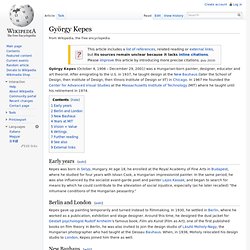
After emigrating to the U.S. in 1937, he taught design at the New Bauhaus (later the School of Design, then Institute of Design, then Illinois Institute of Design or IIT) in Chicago. In 1967 He founded the Center for Advanced Visual Studies at the Massachusetts Institute of Technology (MIT) where he taught until his retirement in 1974. Colin Ware. Colin Ware is the Director of the Data Visualization Research Lab which is part of the Center for Coastal and Ocean Mapping at the University of New Hampshire.
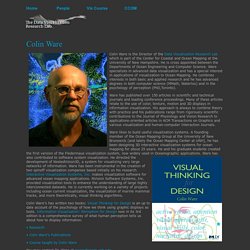
He is cross appointed between the Departments of Ocean Engineering and Computer Science. Ware specializes in advanced data visualization and has a special interest in applications of visualization to Ocean Mapping. He combines interests in both basic and applied research and he has advanced degrees in both computer science (MMath, Waterloo) and in the psychology of perception (PhD,Toronto).
Ware has published over 150 articles in scientific and technical journals and leading conference proceedings. Colin Ware. Shannon-Weaver Model. Gregory. Alan M. MacEachren. Core Research Project Grant for Statistical Map Accuracy - VPI&SU, 1980, 1981, 1982.

Faculty Research Fund Grant for Locational and Attribute Components of Regional Images, , 1985. Research Initiation Grant from the and Mineral Sciences for Geographic Knowledge Acquisition and Spatial Problem Solving: Conceptualization of Regions and the Role of Maps, , 1986. Faculty Research Fund Grant for Strategies for Presenting Map Information with Computers: The Influence of Orientation Bias in Cognitive Maps, , 1987. Faculty Research Fund Grant for The Influence of Map Orientation on Spatial Knowledge Acquisition from Maps, , 1988. Mike Sharples. Keller & Tergan. Baines & Haslam. Ben Terrett. Wilbur Schramm. Wilbur Lang Schramm (August 5, 1907 – December 27, 1987) is sometimes called the "father of communication studies," and had a great influence on the development of communication research in the United States, and the establishing of departments of communication studies in U.S. universities.
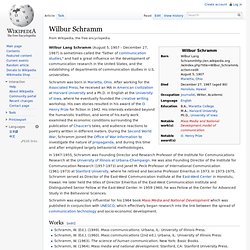
Schramm was born in Marietta, Ohio. After working for the Associated Press, he received an MA in American civilization at Harvard University and a Ph.D. in English at the University of Iowa, where he eventually founded the creative writing workshop. His own stories resulted in his award of the O. Henry Prize for fiction in 1942. Jean Baudrillard. Jean Baudrillard (/ˌboʊdriːˈɑr/;[1] French: [ʒɑ̃ bodʁijaʁ]; 27 July 1929 – 6 March 2007) was a French sociologist, philosopher, cultural theorist, political commentator, and photographer.

His work is frequently associated with postmodernism and specifically post-structuralism. Life[edit] Baudrillard was born in Reims, northeastern France, on 27 July 1929. His grandparents were peasants and his parents were civil servants. Yuri Engelhardt. Knowledge Cartography. Keller & Tergan. John Berger. Early life[edit] Born in Hackney,[1] London, England, Berger was educated at St Edward's School, an independent school for boys in Oxford. His father, S.J.D. Berger, O.B.E., M.C., had been an infantry officer on the western front during the First World War.[2] Berger served in the British Army from 1944 to 1946; he then enrolled in the Chelsea School of Art and the Central School of Art in London.
Wood & Keller. Barrett Lyon. Early life and education[edit] The son of a lawyer, Lyon was raised in Auburn, California.[2] Although he initially struggled in school due to dyslexia, in middle school he became fascinated with computers.
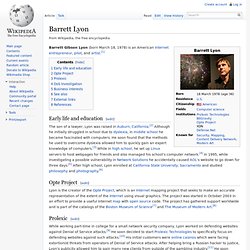
He soon found that the methods he used to overcome dyslexia allowed him to quickly gain an expert knowledge of computers.[3] While in high school, he set up Linux servers to host webpages for friends and also managed his school's computer network.[4] In 1995, while investigating a possible vulnerability in Network Solutions he accidentally caused AOL's website to go down for three days.[5] After high school, Lyon enrolled at California State University, Sacramento and studied philosophy and photography.[6] Opte Project[edit] Lyon is the creator of the Opte Project, which is an Internet mapping project that seeks to make an accurate representation of the extent of the Internet using visual graphics.
Colin Ware. David Marr (neuroscientist) Dr John Snow (1813 - 1858) Edward Tufte. Edward Tufte is a statistician and artist, and Professor Emeritus of Political Science, Statistics, and Computer Science at Yale University.
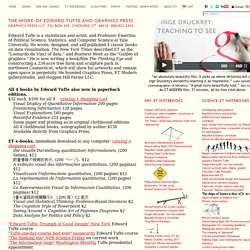
He wrote, designed, and self-published 4 classic books on data visualization. The New York Times described ET as the "Leonardo da Vinci of data," and Business Week as the "Galileo of graphics. " He is now writing a book/film The Thinking Eye and constructing a 234-acre tree farm and sculpture park in northwest Connecticut, which will show his artworks and remain open space in perpetuity. A kolacny. Harry Beck.
Henry Charles Beck (Leyton, London, 4 June 1902[1] – 18 September 1974), known as Harry Beck, was an English technical draftsman best known for creating the present London Underground Tube map in 1931.[2] Beck drew up the diagram in his spare time while working as an engineering draftsman at the London Underground Signals Office.
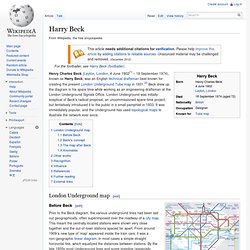
London Underground was initially sceptical of Beck's radical proposal, an uncommissioned spare-time project, but tentatively introduced it to the public in a small pamphlet in 1933. It was immediately popular, and the Underground has used topological maps to illustrate the network ever since. London Underground map[edit] The modern Tube map, based on the simplified topological design invented by Beck Before Beck[edit] Prior to the Beck diagram, the various underground lines had been laid out geographically, often superimposed over the roadway of a city map.
Keller & Tergan. Card, Mackinlay and Shneiderman. Colin Ware. Eduard Imhof. Eduard Imhof's signature Eduard Imhof (25 January 1895 - 27 April 1986) was a professor of cartography at the Swiss Federal Institute of Technology, Zürich, from 1925 - 1965.

Michel-Étienne Turgot. Michel-Etienne Turgo, by Van Loo, 1739. Michel-Étienne Turgot (9 June 1690, Paris – 1 February 1751, Paris) was prévôt des marchands de Paris ("Master of the merchants of Paris", i.e. Mayor of Paris)[1] from 1729 to 1740. His name is associated to one of the most famous maps of Paris, the "Plan de Turgot" ("Turgot Map"),[2][3][4][5] a detailed bird-eye view of Paris realized by Louis Bretez from 1734 to 1739.[6][7] Keller & Tergan. James hartley. Shannon-Weaver Model. InfoDesign: Understanding by Design. Rudolf Arnheim. Dr John Snow (1813 - 1858)
Mike Sharples. Edward Tufte. Tony Malim. Tony Malim. Shannon-Weaver Model. Jean Baudrillard. Hermann von Helmholtz. Card, Mackinlay and Shneiderman. Gestalt psychology. Gestalt psychology or gestaltism (German: Gestalt – "shape or form") is a theory of mind of the Berlin School. The central principle of gestalt psychology is that the mind forms a global whole with self-organizing tendencies.
This principle maintains that the human mind considers objects in their entirety before, or in parallel with, perception of their individual parts; suggesting the whole is other than the sum of its parts. Gestalt psychology tries to understand the laws of our ability to acquire and maintain meaningful perceptions in an apparently chaotic world. Gregory. Dr John Snow (1813 - 1858) Rudolf Arnheim. Alan M. MacEachren. Denis Wood. Ferdinand de Saussure. Ferdinand de Saussure (/sɔːˈsʊr/ or /soʊˈsʊr/; French: [fɛʁdinɑ̃ də sosyʁ]; 26 November 1857 – 22 February 1913) was a Swiss linguist and semiotician whose ideas laid a foundation for many significant developments both in linguistics and semiology in the 20th century.[2][3] He is widely considered one of the fathers of 20th-century linguistics[4][5][6][7] and one of two major fathers (together with Charles Sanders Peirce) of semiotics/semiology.[8] Language is no longer regarded as peripheral to our grasp of the world we live in, but as central to it.
Words are not mere vocal labels or communicational adjuncts superimposed upon an already given order of things. Steven hall. John Allman. Jack van Wijk. Pierre Bourdieu. Gestalt psychology. Wood & Keller. Edward Tufte. Hrant Papazian. Indices : Designers : Hrant Papazian. Quentin Newark. Lau & Vande Moere. Colin Ware.
Keller & Tergan. Faber Birren. Lau & Vande Moere. Michel Eugène Chevreul. Michel Eugène Chevreul (31 August 1786 – 9 April 1889)[1] was a French chemist whose work with fatty acids led to early applications in the fields of art and science. Tom Hallock. J. H. Andrews. Ben fry. Google. How Much Is A Petabyte?